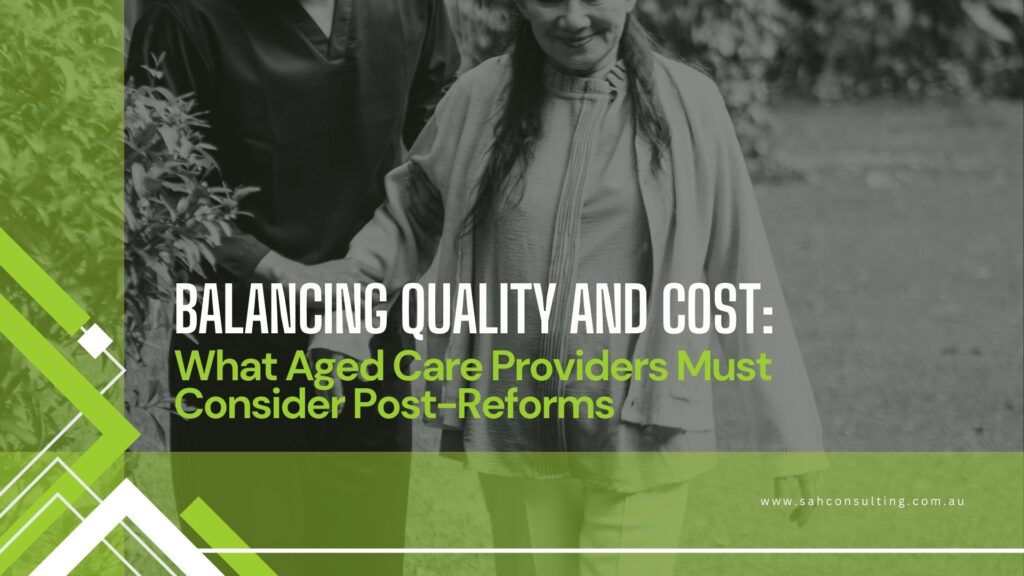The Australian aged care reforms are reshaping how in-home services are delivered and funded. From 1 July 2025, the new Support at Home program will replace the Home Care Packages and Short-Term Restorative Care programmes. The Commonwealth Home Support Programme will follow no earlier than July 2027.
Providers seeking to operate in aged care need to register under the Aged Care Act 2025 while navigating a set of stringent compliance requirements. Providers who do not comply with the new system risk both financial sanctions and loss of funding support.
Aged care providers face a pressing question about achieving superior care quality when facing operational expense management needs. This article identifies fundamental operational areas providers must concentrate on to achieve compliance as well as financial sustainability and operational efficiency following the reforms.
Key Considerations for Aged Care Providers Post-Reforms
The new aged care reforms significantly change how providers operate, with stricter compliance, new funding structures, and rising care demands. To stay viable, aged care providers must address key operational and financial priorities under the Support at Home program.
Managing Workforce Costs Without Compromising Care Quality
Implementation of the Support at Home program drives higher employment requirements for care managers alongside therapists and nurses. The current workforce shortage and cost increases within healthcare providers force them to handle a greater demand.
Providers need to optimise their workforce planning systems to sustain quality care delivery. Staff productivity improvements will result from effective scheduling approaches coupled with better staff training methods along with technological solutions for schedule management. Organisations that provide adaptable work options alongside employee development opportunities and appreciation programs minimise nurse turnover rates, which supports stable patient care delivery.
Navigating New Compliance and Reporting Requirements
Under the Support at Home program, compliance expectations are stricter. Providers must report more details on care delivery, safety standards, and staff qualifications. These requirements are part of the main areas of the Australian government’s aged care reform.
The administrative workload is also significant. Digital record-keeping, automated reporting tools, and integrated care management systems can reduce manual tasks and improve accuracy. Staying up to date with regulation changes is critical—non-compliance can result in penalties, service restrictions, or loss of funding under the Australian aged care reforms.
Understanding Funding Changes and Budget Allocation
The new aged care reforms change how funding is allocated and managed. Providers must now adjust to individualised care recipient budgets, which include care management fees. This affects how services are planned, delivered, and billed.
Operational planning needs to align with each recipient’s approved funding. Providers must be transparent about costs and ensure services stay within budget limits.
To manage financial pressure, providers should consider bulk purchasing supplies, sharing resources with partner organisations, and improving internal processes to boost efficiency and cut unnecessary spending.

Registering for the Support at Home Program: A Key Step for Providers
Registration under the Support at Home program is mandatory. Without it, providers will not be eligible for government funding from 1 July 2025.
The registration process is detailed and requires meeting strict eligibility criteria, including evidence of governance, care quality, and compliance systems. Preparing the right documentation and understanding regulatory expectations can be time-consuming and complex.
At SAH Consulting, we help aged care providers navigate the registration process from start to finish. Our team ensures you meet all requirements efficiently, so you can focus on what matters most—delivering quality care.
Need help with your Support at Home registration? Contact SAH Consulting for expert guidance.
Leveraging Technology to Improve Efficiency and Reduce Costs
Technology is a key tool for balancing quality care with cost control. Assistive technology and digital tools—such as remote monitoring, automated rostering, and electronic care plans—can streamline care delivery and reduce manual workloads.
The Assistive Technology and Home Modifications (AT-HM) scheme supports providers in delivering safe, efficient in-home care. It enables tailored solutions that promote client independence while easing pressure on staff.
Investing in digital systems also improves back-end operations. Tools for scheduling, reporting, and record-keeping reduce admin time and minimise errors. Providers should review resources like the changes to Aged Care in Australia booklet to stay informed on available tech options and funding support.
Conclusion: Preparing for a Sustainable Future in Aged Care
The Australian aged care reforms bring challenges and opportunities. While the shift to the Support at Home program requires major adjustments, providers can still deliver high-quality care without overspending.
With strategic planning, smart workforce management, and the right technology, balancing quality and cost is achievable. Providers who act early and adapt to new requirements will be best placed to succeed in a changing environment and deliver sustainable, client-focused aged care services.
Unsure where to start? Let SAH Consulting guide you through the changes. From registration to compliance, we’re here to help you move forward with confidence. Reach out today and let’s get your service future-ready.
